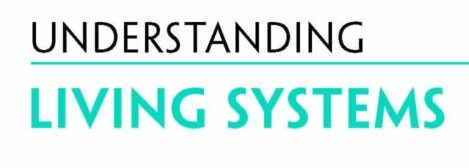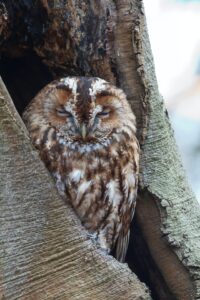Wood mice are essential to woodland life. So, by learning from wood mice, we get a better understanding of ecological intelligence. Study the forest, and we find the intimate relationship between mice, trees and tawny owls.
So what do we know about intelligence? In the 1960s, researchers studied animal behaviour in ‘controlled’ laboratory conditions. Placing rats in boxes or mazes, they measured their ‘conditioned responses’. For example, rats ‘conditioned’ to press a lever for a food reward. It assumed that learning was either reward or aversion based. But learning is more than stimulus and response. Animals create a logic for events. This also we can learn from wood mice.
physical and social environment
This laboratory approach appeared more ‘scientific’ because it was ‘controlled’. But isolating an animal in a box took away its ecological intelligence. It is no way to understand wood mice. Learning about wood mice means in their habitat, not in a box.
You take a rat and put it into a laboratory under controlled conditions. Other variables could be excluded or held constant. The scientists took the animals out of their rich physical and social environment. It assumed that this rich environment played a minor role in the development of animal behaviour, and only by ‘conditioning’ the animal’s behaviour.
Yet, Intelligence is not about dealing with the repetitive events of life but solving the problems arising from change. It is more creative than pressing a lever at the sound of a bell. That much we learn from wood mice.
So, the study of intelligence ignored purposeful behaviour or animal ‘thought’. Reducing animals to mere automata, explaining behaviour as conditioned reflexes leaves little room for logic. No matter how complex, behaviour could be explained by a simple stimulus-response association.
This approach to behaviour began with the behaviourist John Watson, who said in a paper published in 1913:
‘Psychology as a behaviorist views it is a purely objective experimental branch of natural science. Its theoretical goal is … prediction and control.’
animals as automata
The endeavour was to learn the mechanics of behaviour to control it. Or as B.F. Skinner put it in 1971, “What we need is a technology of behaviour”. Like any other machinery, it will have its inputs and outputs associated with them. It regards animals as automata.
The results of these studies found their way into education. But they ignored the richness of an organism’s natural environment, both physical and social. It assumes that intelligence can be stripped down to a core mechanical ingredient – the concept of innate intelligence. Intelligence that scientists can measure in a box. Such an approach has its basic expression in the gene-centred view of intelligence – the idea of ‘intelligence genes’. Yet, genes are not intelligent; intelligence is what organisms do with genes. This we learn from wood mice.
intelligence as a dynamic process
Yet, intelligence is neither a static nor an isolated state. Instead, it is a dynamic interactive process. Intelligence is a complex engagement, and it is also a cultural and social process for social organisms.
We cannot understand the behaviour and function of organisms in isolation from their environment or their social being. Behaviour is contextual and adaptive. So, understanding wood mice needs that context.
Treating the environment as a box, a bit like a container for clockwork toys, leads to a false separation of ‘environmental’ causes outside the organism from ‘inherent causes’ inside the organism. This we learn from wood mice.
This split often presents as simplistic and misleading as the nature versus nurture issue. If organisms perish in a bush fire, then clearly, an external cause of their demise is perhaps beyond question. The organism died as a result of events external to the organism. But organisms are not entirely separated from their environment, if at all.
organisms integral to the environment
So, we learn from wood mice that a forest doesn’t merely provide an environment for organisms living within it. The forest is more than the trees. A forest is an intimate and complex relationship of organisms, big and small. It is an organic entity, and a proper understanding of behaviour needs to take account of this intimacy. Also, any measure of intelligence must indeed include the way organisms function in this process.
seed dispersal by wood mice
From little acorns, tall oaks grow. But the spread of the forest depends on small mice and other rodents living in the undergrowth. The undergrowth is created from leaf litter dropped by the trees. Small rodents play a crucial role in tree seed dispersion, particularly rodents such as wood mice, because they cache their food.
Not only do the mice disperse the seed, but they plant it too! In this sense, the wood mice are as vital as bees and other insects in the maintenance and spread of the forest. All good gardeners will encourage insects and worms because they understand this intimate interdependency. So, an ecosystem is a functional entity. We cannot understand the forest by simply looking at the trees.
Trees, leaves and seeds
In the forest ecosystem, the wood mouse, Apodemus sylvaticus, plays a role in seed dispersion and prey for birds, reptiles, and other mammals. For example, in the Mediterranean forests of the Iberian peninsula, wood mice play a crucial role in oak regeneration patterns. These roles are perhaps incidental to the lives of wood mice, yet they are integral to the ecosystem of which they are a part, along with other organisms.
The trees produce leaves that fall to create leaf litter, covering wood mice and other species. Unfortunately, sometimes we can’t see the wood for the trees.
Owls and mice
Little wonder the abundance of wood mice depends on seasonal factors. A recent study shows one such factor is summer droughts. As with other small rodents, high reproductive rates allow a rapid population recovery. So, populations will fluctuate with season. The abundance of females is dependent in turn on acorn abundance. Such is the intimate interrelations of the ecosystem. The Tawny owl’s sense of hearing may be ten times better than a human’s, and it can hunt wood mice using this sense alone in the darkness of woodland. Wood mice are vital for their existence. Little wonder then that Tawny Owl numbers fluctuate with that of wood mice.
wood mouse behaviour
We can only understand fully wood mice behaviour in this ecosystem. For example, wood mice exhibit broad plasticity in their behaviour, modifying their diet depending on the most abundant food source such as fleshy fruits, fresh plant parts and even invertebrates. Population density also influences their behaviour. Also, male and female wood mice exhibit different behavioural responses. So, understanding them requires this context.
human intelligence
We humans are like the wood mice, dependent on our environment. The wood mice may not know their role in maintaining the forest, but we humans can understand our potential for destroying it. Yet, we can learn much more from wood mice.
Forests are a big deal for us too, and not least because they sequester and store carbon. They provide timber and other forest products, and they are vital to the survival of many of the world’s poorest people who live in and around them. We can’t understand economics and the consequences of our decisions without taking account of this dependency.
A problem for we humans is that we have isolated ourselves from our ecosystem. Yet, our activity affects badly the global climate and habitats. So, we destroy more of our forests than we plant. Also, we deplete the world’s freshwater resources with our increasing demand for crops and world trade.
So, Is this the best we can do with our ‘intelligence’? Or can we learn from wood mice?


